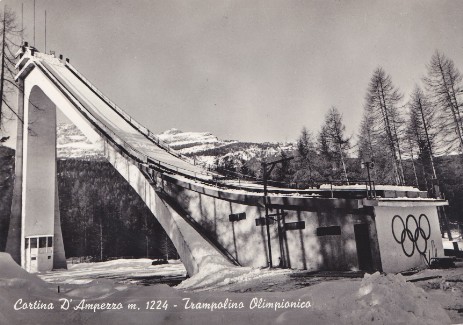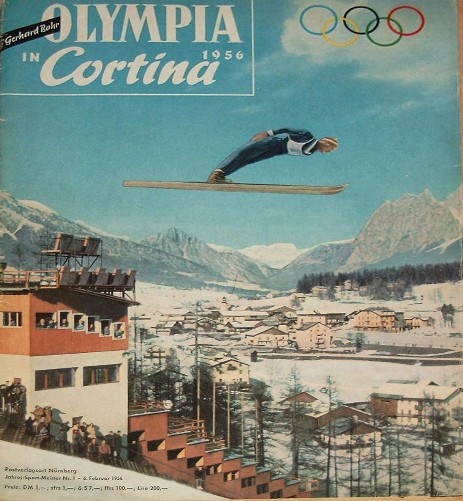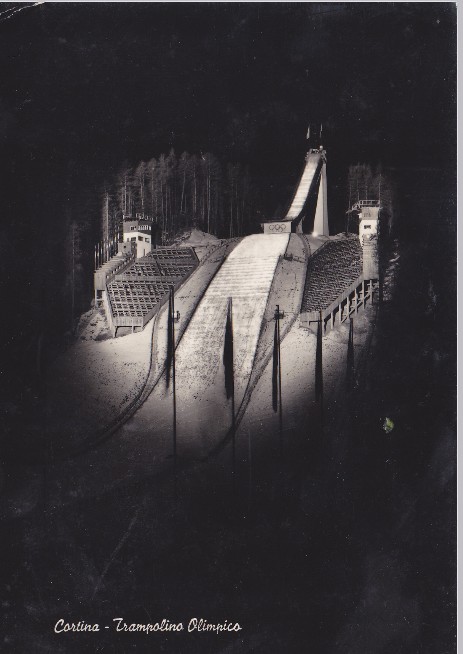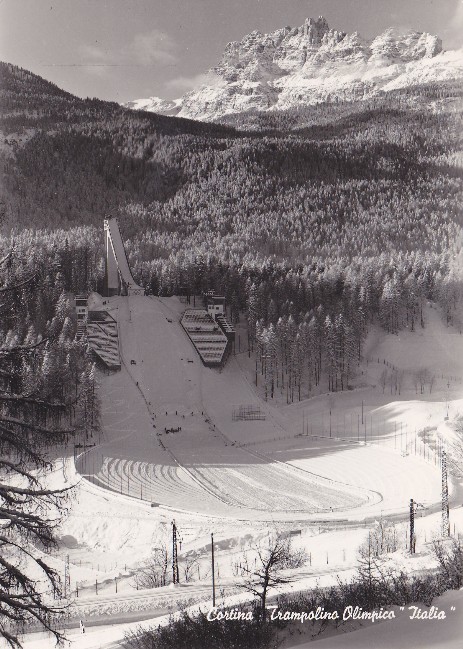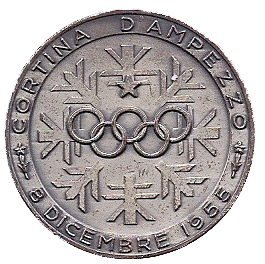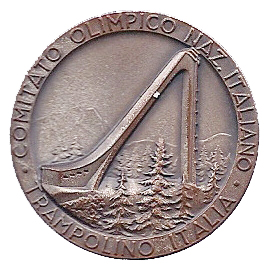Trampolino Italia
La storia del trampolino «Italia» incominciò nel 1923. Fu appunto in quell'anno che, per iniziativa del locale Club Sportivo Dolomiti e con un congruo contributo finanziario del compianto barone Carlo Franchetti e degli albergatori di Cortina, venne realizzato per la prima volta e prese il nome di «Franchetti». Il trampolino «Franchetti», costruito in località Zuel e dotato di una pista di lancio di legno di modeste proporzioni, ebbe una portata di salto di circa 40 metri. Nel 1926, al «Franchetti» furono apportate le prime modifiche, col conseguente aumento della portata a metri 52. Nel 1939 il trampolino venne completamente demolito, perchè non più rispondente alle nuove esigenze tecniche in vista delle gare internazionali progettate dalla F.I.S. a Cortina per il 1941. E nell'estate del 1940 l'Azienda Autonoma di Soggiorno e Turismo, su progetto dell'Ing. Mario Giacobbi e con la collaborazione del tecnico Federico Terschak, realizzò - con il finanziamento del C.O.N.I. - un nuovo impianto, cui venne dato il nome di Trampolino «Italia» della portata di 75 metri, dotato di un ponte di spinta in larice, dell'altezza di metri 48.
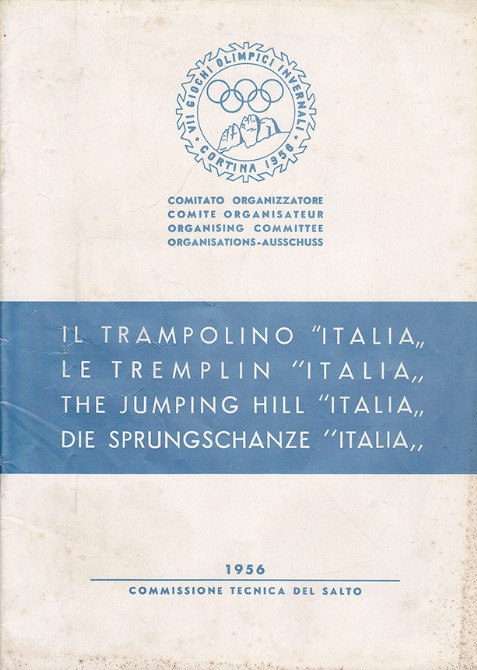

Per i Giochi Olimpici occorreva un impianto veramente moderno. Perciò, come l'araba fenice, il vecchio glorioso trampolino scomparve ancora una volta per rinascere più superbo che mai alla luce del sole dolomitico. Il 15 aprile 1955 furono iniziati i lavori di demolizione e nel settembre dello stesso anno l'attuale complesso veniva inaugurato e consacrato alle glorie di Olimpia.
Anche in tale circostanza fu coniata una speciale medaglia commemorativa, distribuita a tutti gli intervenuti.
L'inaugurazione ufficiale del trampolino avvenne l'8 dicembre 1955 con l'intervento del senatore Giuseppe Caron, in rappresentanza del Governo. Erano presenti i dirigenti del Comitato organizzatore, il Sindaco di Cortina d'Ampezzo e il Prefetto di Belluno. Benedisse l'opera Monsignor Giovanni Untergasser, Vicario della diocesi di Bressanone.

